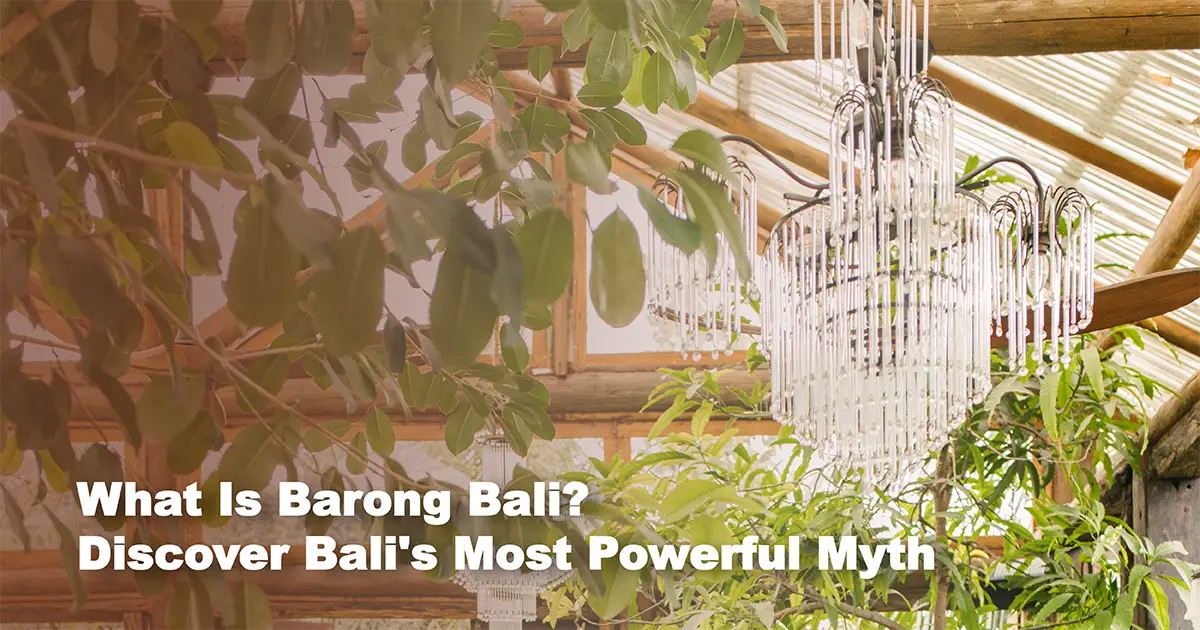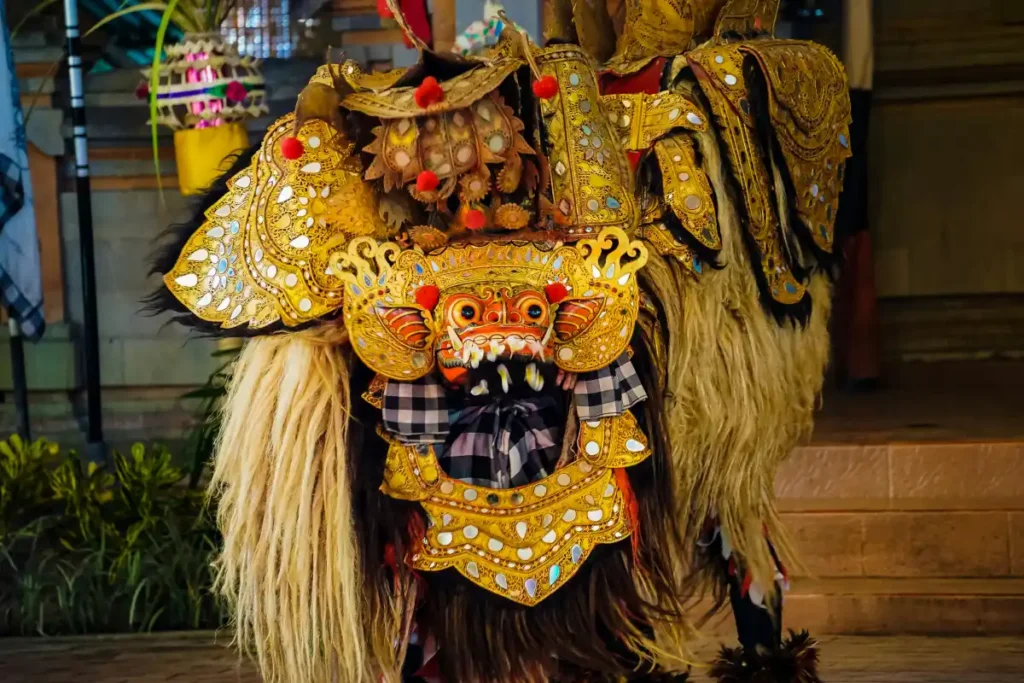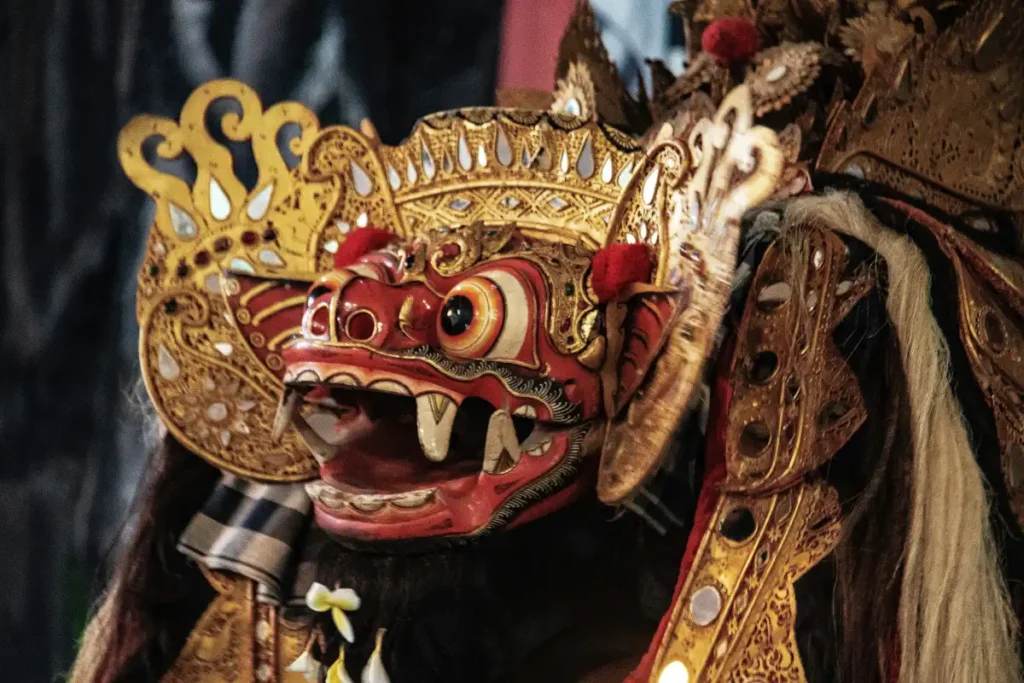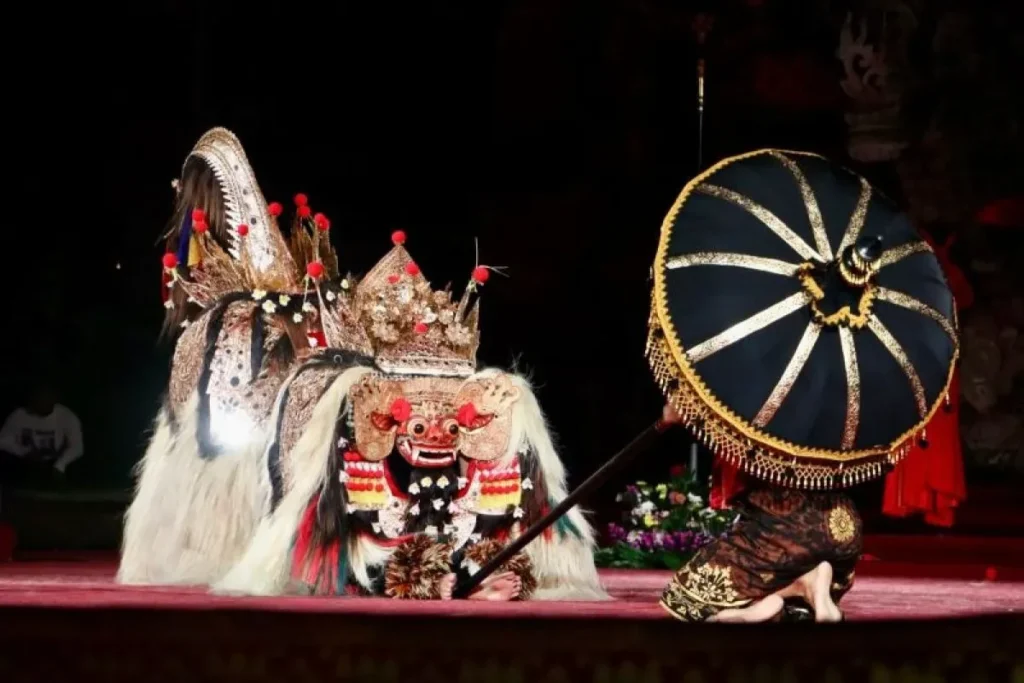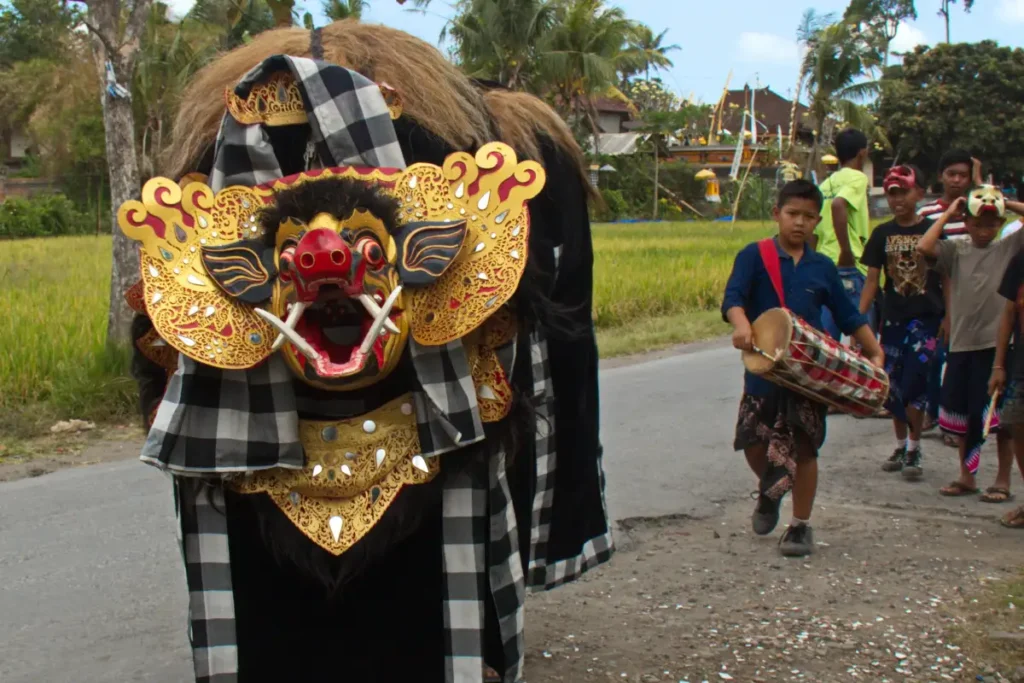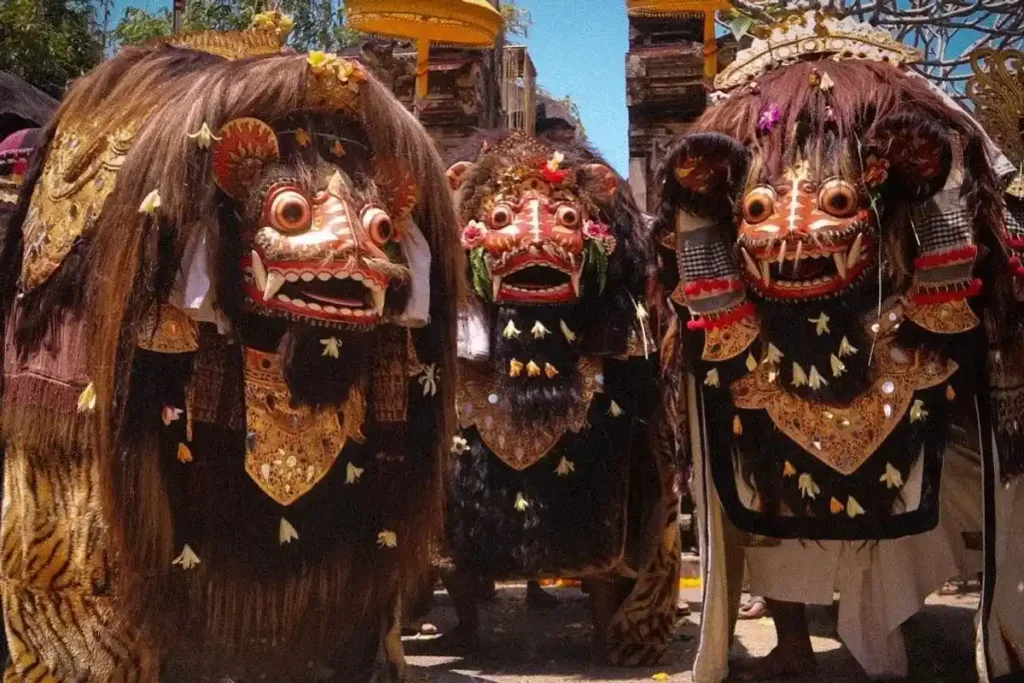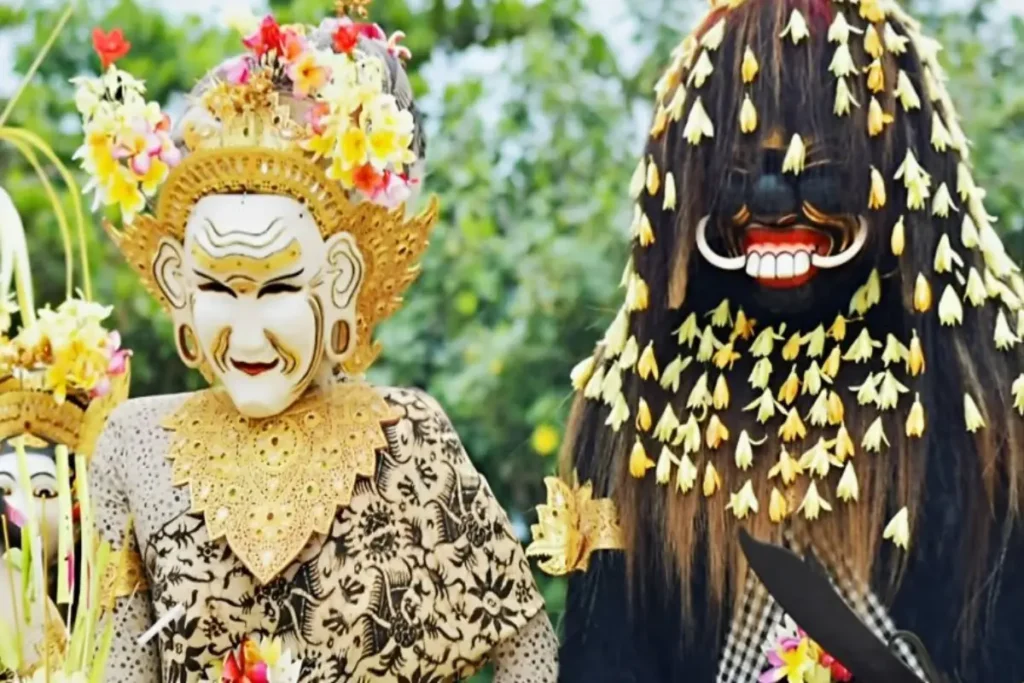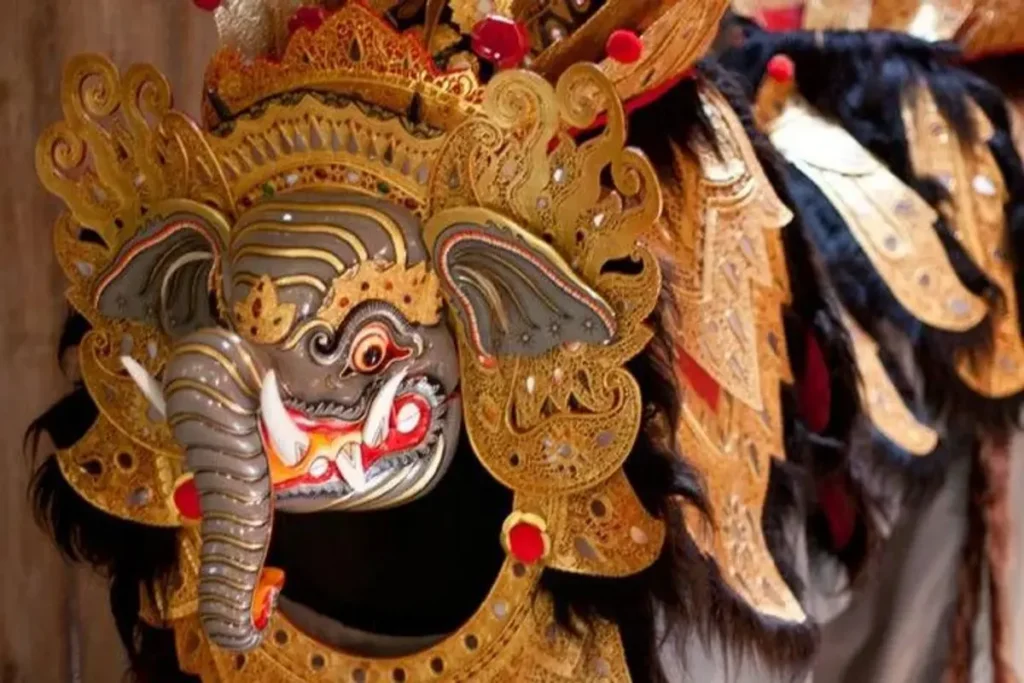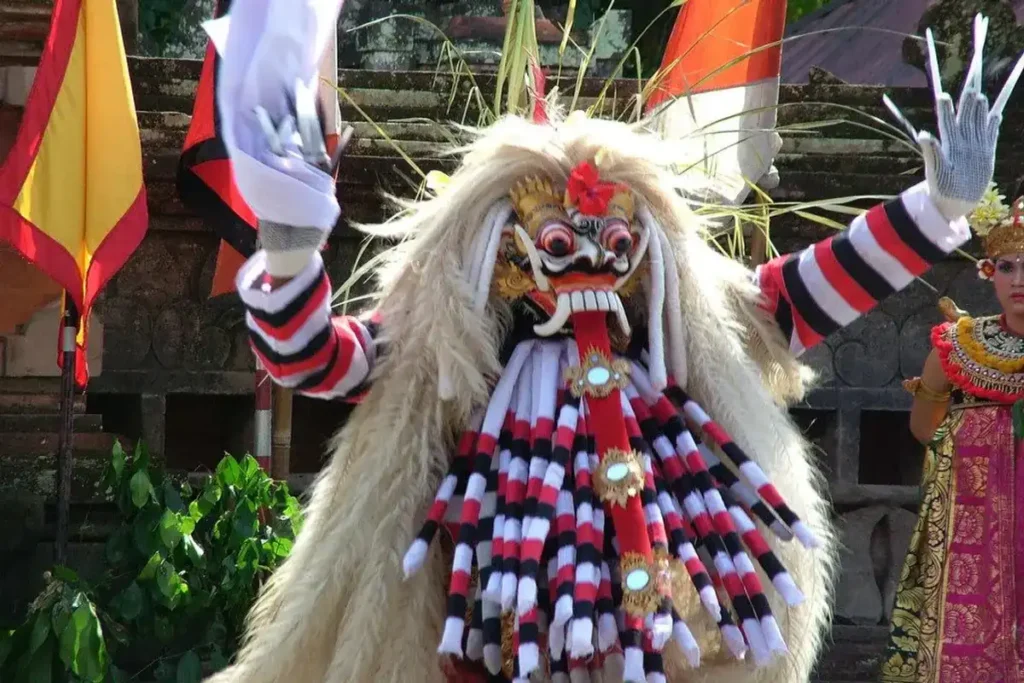Step into the world of Balinese mythology, and you’ll soon meet Barong, the lion-like guardian spirit and beloved cultural icon across the island. Often seen in dance performances and sacred rituals, Barong isn’t just a costume or character; it is the living embodiment of good, protection, and spiritual balance in Balinese Hinduism. Barong’s presence represents the fight to preserve harmony in a world that constantly shifts between light and darkness.
But to truly understand Barong, you must also understand its eternal counterpart: Rangda, the terrifying queen of darkness. Together, they perform a sacred cosmic battle, one that is still played out in temples and village halls all across Bali.
Mythology of Barong: The Guardian of Good
Barong originates from ancient Balinese mythology and animist traditions that predate Hinduism’s arrival on the island. According to legend, Barong is a spiritual being, sometimes considered a protector spirit or a forest guardian, tasked with keeping evil at bay.
He is said to roam the jungles, villages, and mountains, watching over people and animals. Barong is a symbol of dharma, the universal principle of righteousness, and it is often invoked in rituals that call for balance, cleansing, and protection.
Read also: Balinese Myths and Taboos: Curses and Culture in Bali
The Meaning and Symbolism of Barong
Barong represents protection, purity, and the positive spiritual energy that counters chaos. Its wide eyes, large fangs, and expressive mask might seem intimidating, but its role is to ward off negativity. Covered in thick fur and adorned with intricate ornaments and gold accents, the Barong mask is treated as sacred, often blessed and stored in temple shrines when not in use.
Balinese Hindus believe that Barong is not just a symbol, but an actual manifestation of a protective spirit, especially when its mask is inhabited during trance rituals and sacred performances.
Cultural significance of Barong in Bali
In Balinese culture, Barong is far more than just a character in a traditional dance, it is a sacred guardian spirit, deeply woven into the spiritual beliefs and daily life of the Balinese people. Representing the force of good, Barong stands as a symbol of protection, balance, and harmony. Its presence reflects the Balinese philosophy of Rwa Bhineda, the belief that the universe is composed of opposing but complementary forces, such as good and evil, light and darkness, life and death.
Barong is often depicted as a mythical lion-like creature, though its form varies depending on the region. In some villages, it may appear as a boar, tiger, or dragon, yet Barong’s role remains the same: to defend against negative energies and restore spiritual balance. Its eternal opponent is Rangda, the fearsome witch queen who embodies chaos, destruction, and black magic. The never-ending battle between Barong and Rangda, often dramatized in ceremonial dances, represents the ongoing tension between good and evil that exists in the world, and the need to maintain balance, not eliminate either side completely.
For the Balinese, Barong is a living entity, not just a performer’s costume. The sacred costume is housed in temples, treated with reverence, regularly blessed with offerings and prayers, and only brought out during special religious ceremonies. Before and after each performance, spiritual rituals are conducted to invite Barong’s spirit to enter and then respectfully release it, highlighting the strong spiritual connection between performance and faith.
Witnessing a Barong dance or procession is an invitation into the sacred heart of Balinese tradition. It is not merely a cultural show for tourists, but a powerful ritual deeply respected by the local community, one that has been passed down through generations as a form of protection, storytelling, and spiritual grounding.
Barong appearance and depictions in Bali
Barong’s appearance in Bali is both striking and symbolic, with its physical form varying across regions, each embodying different aspects of Balinese mythology and local beliefs. The most widely recognized version is Barong Ket, a lion-like creature with a grand, gilded face, bulging eyes, and an intricately carved mouth lined with fangs. It wears an opulent costume made of real animal hair, mirrors, gold-painted wood, and fabrics adorned with sacred motifs, creating an awe-inspiring presence that reflects its role as a powerful protector spirit.
Barong’s body is long and flowing, carried by two dancers hidden inside the costume, one operating the head and front legs, the other controlling the rear. This cooperative performance not only requires physical coordination but is also seen as a sacred duty, as the dancers are considered vessels for Barong’s spirit during ceremonies and processions.
Types of Barong in Bali: Guardians of the Island in Many Forms
There are several types of Barong you may encounter in traditional rituals, each representing unique spiritual forces. Here’s a deeper look at the different types of Barong in Bali:
1. Barong Ket (Lion Barong)
Often considered the most majestic and widely known form, Barong Ket has a lion-like face, adorned with gold, mirrors, and colorful decorations. It represents nobility, courage, and protection, serving as the king of good spirits. You will often see Barong Ket in tourist-favorite performances like the Barong and Rangda dance in Ubud or Batubulan. Its appearance marks an effort to guard villages and individuals from misfortune and chaos.
2. Barong Bangkal (Pig Barong)
Barong Bangkal takes on the form of a wild boar or pig, and is commonly featured in village parades during celebrations such as Galungan. Children often carry it around the neighborhood, accompanied by traditional music. Though playful in presentation, this Barong symbolizes agricultural protection and fertility, believed to bless rice fields and ensure prosperity.
3. Barong Macan (Tiger Barong)
Less commonly seen, Barong Macan has the appearance of a tiger and is revered in rural and forested regions. Tigers are symbols of both fear and respect in Balinese lore, and this Barong embodies the spirit of the wild, protecting communities from unseen dangers in nature. Its presence is usually tied to important purification rituals.
4. Barong Landung (Giant Human Barong)
Barong Landung is dramatically different from the others. It takes the form of tall, puppet-like human figures, often a male and female pair. These figures are paraded during festivals to ward off evil spirits and bring balance between male and female energies. Their towering size and striking features are hard to miss, making them favorites in large temple celebrations and street processions.
5. Barong Gajah (Elephant Barong)
Rare and sacred, Barong Gajah appears as an elephant and is associated with wisdom, spiritual strength, and ancient Hindu teachings. It is typically kept in temples and only appears during important religious rituals. With strong ties to deities like Ganesha, this Barong reflects the island’s deep philosophical roots and connection to divine knowledge.
Each Barong plays a vital role in spiritual protection and cosmic balance, and while their appearances and stories may differ, they all represent the triumph of good over evil. Many Balinese believe these figures are not just costumes, but sacred vessels inhabited by spirits when rituals or dances are performed.
Meet Rangda: Barong’s Rival, The Queen of Darkness
To understand the role of Barong, we must also meet Rangda, Barong’s eternal enemy. Rangda is a frightening, witch-like figure symbolizing chaos, destruction, and the dark forces of adharma (unrighteousness). With it’s long fangs, wild hair, and protruding tongue, Rangda is said to represent the spirit of an evil widow queen from Balinese legend, sometimes believed to be derived from the historical figure of Calon Arang, a powerful witch who used black magic to seek revenge.
It is the embodiment of all negative energy, plague, death, black magic, and it’s presence in the Barong dance isn’t just for show. It is a very real force in Balinese spiritual life, often invoked in rituals aimed at purification, exorcism, or restoring cosmic balance.
The Barong Dance: A Ritual Battle of Good vs Evil
Perhaps the most famous way Barong appears to visitors is through the Barong Dance, a theatrical performance that reenacts the timeless battle between Barong and Rangda. More than just entertainment, the dance is a spiritual drama, often performed in temples, villages, and cultural centers like Batubulan and Ubud.
Dancers in elaborate costumes enter a trance, guided by the rhythm of the gamelan orchestra, portraying the story of Barong protecting the people from the black magic of Rangda. In this sacred performance, Rangda casts deadly spells, turning warriors against themselves. Barong then blesses the krises (daggers) and empowers the dancers to resist its influence, often resulting in dramatic scenes of warriors attempting to stab themselves with enchanted blades, only to be protected by Barong’s magic.
Read more: Why Is Bali So Special? Culture, Nature, and What Makes It Famous
Witnessing the Spirit of Bali
The Barong and Rangda narrative is not about the victory of good over evil, but about maintaining harmony. Neither wins. They are locked in eternal balance, just as the forces of light and dark must coexist in the universe. This concept is deeply rooted in Balinese Hinduism, where duality, light and dark, good and evil, is accepted as part of life. Every temple ceremony, every trance ritual, and every sacred dance is designed not to eliminate one side, but to keep the balance between them.
Witnessing a Barong dance isn’t just about watching a show, it’s about connecting with a deeper layer of Balinese culture that continues to thrive today. So next time you see a Barong mask or hear the hypnotic beat of gamelan music, you’ll know: it’s not just tradition, it’s protection, story, and spirit in motion. Make time to experience it, and you’ll leave Bali with more than just memories.

